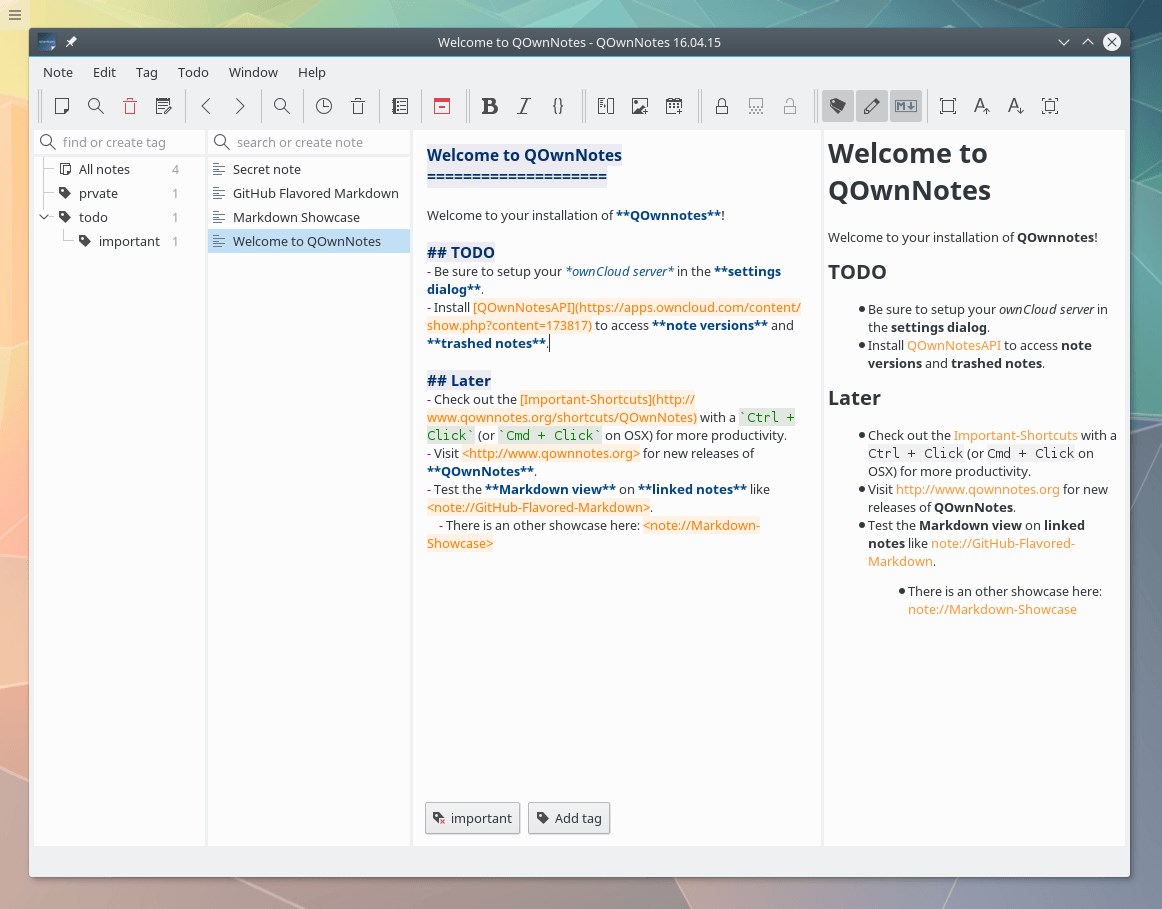

- #QOWNNOTES VS PDF#
- #QOWNNOTES VS UPGRADE#
- #QOWNNOTES VS PORTABLE#
- #QOWNNOTES VS ANDROID#
- #QOWNNOTES VS SOFTWARE#
It also addressed the awkward and sluggish saving problem by having a new server mode which meant that changes to existing entries only affected that single entry, saving unnecessary data transfer over the internet on change. The upgraded version retained the philosophy of being a single page wiki which was perfect for hosting it as a website. At that time, I was also very interested in digital archiving, so I explored using this new version as a commonplace book, essentially a scrapbook for ideas and knowledge.
#QOWNNOTES VS UPGRADE#
Tiddlywiki as a commonplace bookĪ few years later, Tiddlywiki received an upgrade and it looked shiny. However, there is no easy way to write notes on the go.

#QOWNNOTES VS PORTABLE#
The plain text format makes it portable for other systems.

There is also journalling support out of the box which makes it a viable candidate for micro notes. My verdict: This is perfect for creating notes with many media attachment. ZimWiki also has a export to HTML solution for turning the collection into a website for read only access but I didn’t explore automating so it didn’t become my workflow.Īn example of using ZimWiki for taking notes Using file syncing services like Dropbox allowed me to access my notes on the phone, and I could even edit them too. The plain text format makes it great for reading on the go too because most system can read text files without additional software.
#QOWNNOTES VS PDF#
Adding pdf attachments made it easy to link to lecture notes, and I used that feature quite extensively. That said, the main selling point to me was the ease of adding media, such as screen shots, and latex equations to notes entries which made taking study notes pleasant. I like it because it is simple, the data is portable - notes are just text files - and it is open source, which meant that I could write extensions to it to scratch my own itch. I tried RedNote, CherryTree, MediaWiki, Evernote, OneNote, but they all felt clumsy, inflexible and didn’t really gel with me. I considered using Tiddlywiki but it had a few rough edges which made me look around for other options.
#QOWNNOTES VS SOFTWARE#
ZimWikiĪt university, I decided to invest in a digital knowledge management system for taking lecture notes, and tried several software to achieve this. If there are many notes with media, or if saving over the internet is a requirement, it can get a bit sluggish and awkward over time. My verdict: It is great as an offline text wiki for one user. My puzzle repertoire using Tiddlywiki classic It was a cute idea, but I found that editing on the small screen was not ideal back then.
#QOWNNOTES VS ANDROID#
this android app, essentially wrapping the single file in a local server to allow for editing on the go, along with a performant way of saving large wiki files. The community came up with a solution for this by developing phone apps, e.g. However, making changes to existing entries on the website requires a bit more effort and can be sluggish when the wiki gets large because it needs to upload the whole file for every change, no matter how small. Tiddlywiki classic was great as a offline wiki system and was straightforward to put online for reading and information retrieval. Back then, I enjoyed solving math and logic puzzles and used Tiddlywiki to collect and curate interesting puzzles I encountered. For a single HTML page, it is surprisingly good: it supported multimedia notes and has a search functionality built-in. My first knowledge management software that I used a little more than a decade ago was Tiddlywiki classic, a single page HTML wiki software. Hopefully it is useful to curious readers looking for note taking software options. Each section includes a verdict aimed at the reader thinking of using the software. Last weekend, I reviewed my workflow and here are my reflections on all the software I’ve tried and used over the last decade in chronological order. Some software are better suited for one category than others, but the best will depend on one’s workflow. The latter two requires deliberate effort to plan and give structure to the content. Micro text covers consists of fleeting thoughts and requires almost immediate offloading from the mind otherwise it will be forgotten. I classify notes into three categories: micro text notes (<500 characters), notes consisting primarily text (including code), and notes that have embedded media like images. For me this involves having a good digital information capture and retrieval workflow, a.k.a note taking. With so much information out there today, having a system to process and manage them is crucial to not be overwhelmed.


 0 kommentar(er)
0 kommentar(er)
